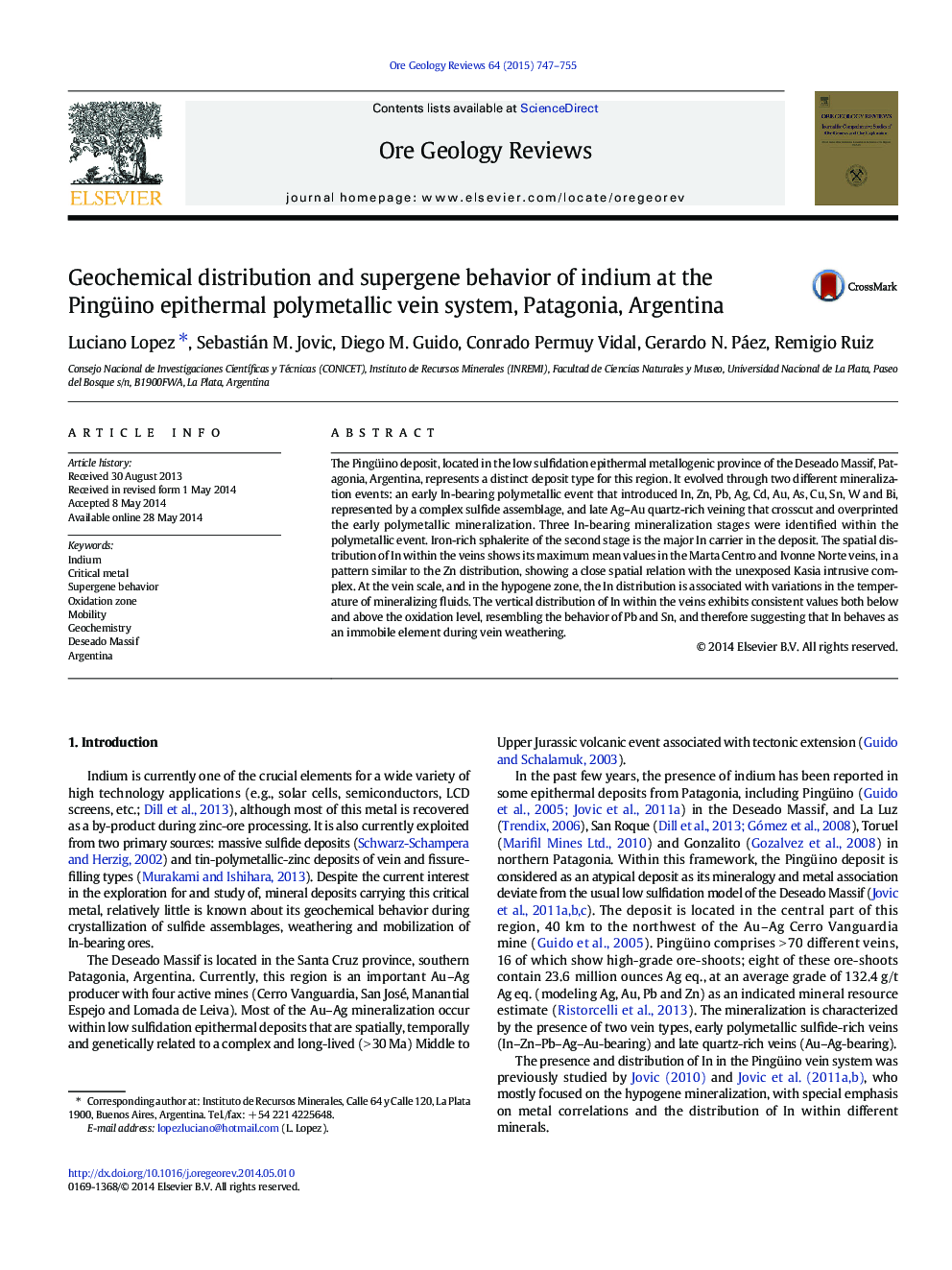| Article ID | Journal | Published Year | Pages | File Type |
|---|---|---|---|---|
| 4697133 | Ore Geology Reviews | 2015 | 9 Pages |
•At deposit scale, In distribution can be related to the Kasia intrusion.•Indium hypogene distribution is controlled by the fluid temperature.•Indium is immobile during supergene ore modifications.
The Pingüino deposit, located in the low sulfidation epithermal metallogenic province of the Deseado Massif, Patagonia, Argentina, represents a distinct deposit type for this region. It evolved through two different mineralization events: an early In-bearing polymetallic event that introduced In, Zn, Pb, Ag, Cd, Au, As, Cu, Sn, W and Bi, represented by a complex sulfide assemblage, and late Ag–Au quartz-rich veining that crosscut and overprinted the early polymetallic mineralization. Three In-bearing mineralization stages were identified within the polymetallic event. Iron-rich sphalerite of the second stage is the major In carrier in the deposit. The spatial distribution of In within the veins shows its maximum mean values in the Marta Centro and Ivonne Norte veins, in a pattern similar to the Zn distribution, showing a close spatial relation with the unexposed Kasia intrusive complex. At the vein scale, and in the hypogene zone, the In distribution is associated with variations in the temperature of mineralizing fluids. The vertical distribution of In within the veins exhibits consistent values both below and above the oxidation level, resembling the behavior of Pb and Sn, and therefore suggesting that In behaves as an immobile element during vein weathering.
